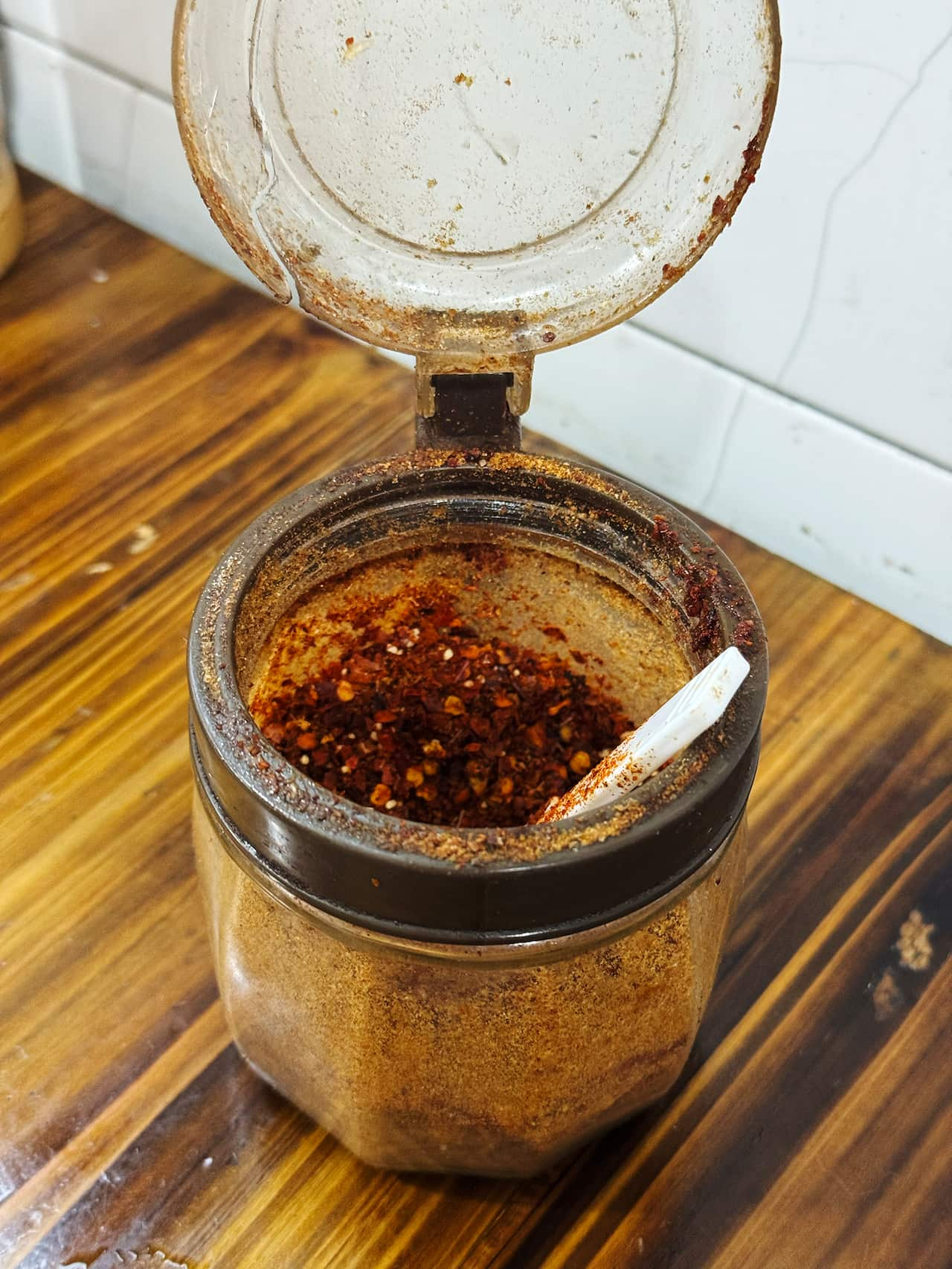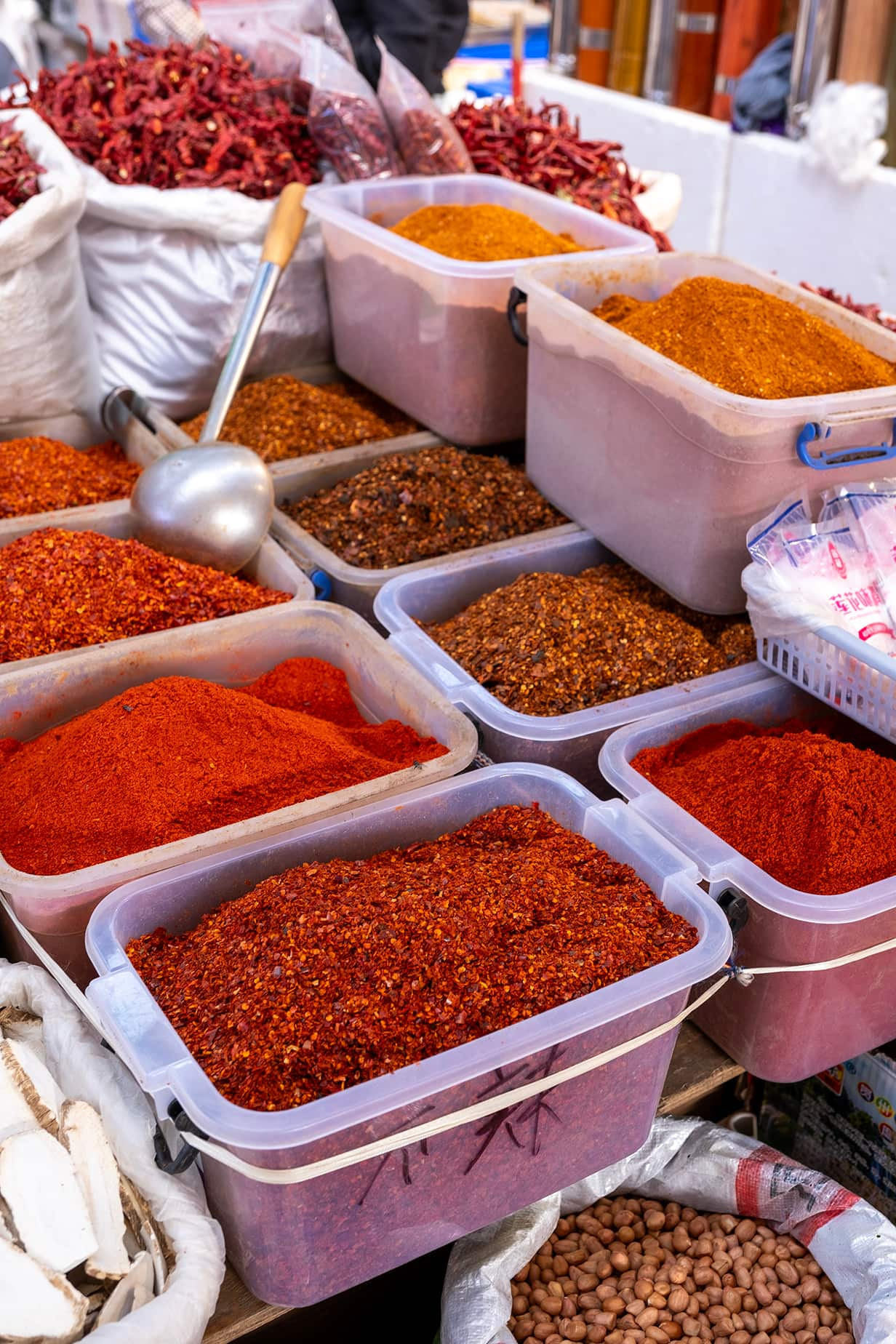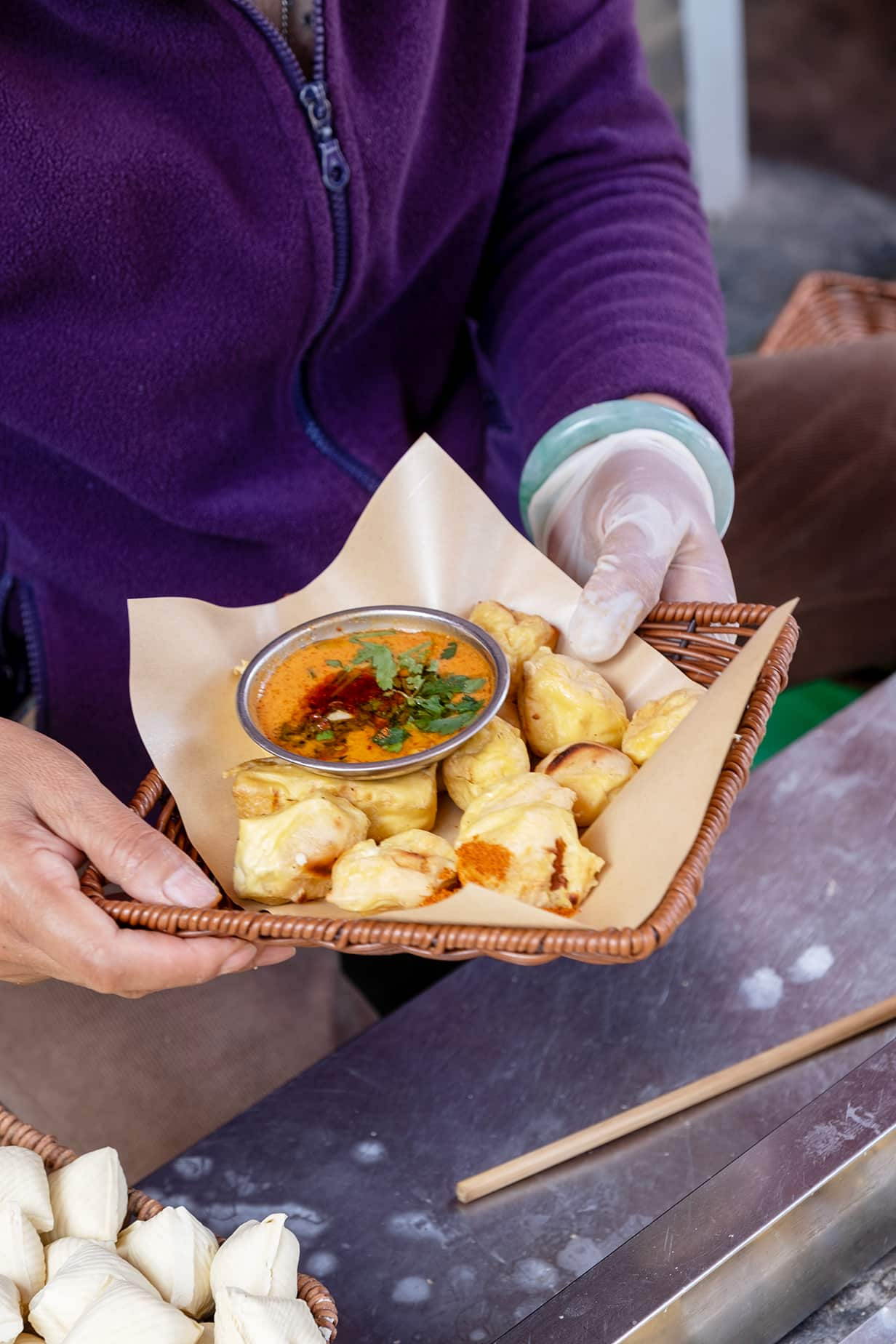If you haven’t heard of danshan yet, brace yourself – it’s becoming quite the ‘thing’ on niche food socials. And we all know that what starts out in quiet corners of the internet quickly takes kitchens by storm; imagine life without a good drizzle of IG-famous chilli crisp, or the rim of your margarita glass naked of TikTok-touted Tajín. Yeah. Sad vibes. So, how good is it that there’s a new spice blend set to make life even tastier?
Danshan might be new to the algorithm, but it has long been a cornerstone of Yunnan cuisine. Its exact origins are a little sketchy, but it’s thought to have come from Dai cooking – the Dai are an ethnic minority from the south of China’s Yunnan province, which borders Myanmar, Laos, and Vietnam. Dai cuisine is thick with Southeast Asian influences: think rice noodles, fresh herbs, spicy dips, tangy flavours, and plenty of sticky rice. Over time, danshan became a go-to seasoning across the province, part of a centuries-old southwest Chinese tradition of cooking with chillies. Introduced from the Americas in the 16th century, chillies spread inland in China not just for their heat, but for their ability to layer flavour, preserve food, and perfume dishes. Here, spice is as much about aroma and depth as it is about fire.

Danshan is a type of dry dipping blend known more generally as zhàn shuǐ là (蘸水辣), which translates to “spicy dipping salt.”
So what precisely is danshan? The word itself (literally “dip mountain”) is actually a brand that’s become shorthand for the mix, much like 'Glad Wrap' is for cling film. At its core, danshan is a type of dry dipping blend known more generally as zhàn shuǐ là (蘸水辣), which translates to “spicy dipping salt.”
The basic formula is simple: roasted and ground dried chillies (such as Yunnan’s long, red qiūběi chillies, or other local varieties) are combined with salt, MSG (essential for that addictive smack of umami), and toasted sesame seeds, sometimes boosted with a touch of sugar. From there, versions can get gloriously complex. Cooks might add some (or all!) of the following: ground roasted Sichuan peppercorns, dried mandarin peel, cumin, cassia, fennel, star anise, or cloves. It’s traditionally made by hand-pounding using a mortar and pestle, so the texture is rustic (more flake than powder) with visible chilli seeds and sesame. Having said that, some versions can be quite fine. Either way, the result tastes roasty, nutty, savoury, and a bit salty, with a pleasant chilli warmth that builds rather than blazes.
Traditionally, danshan is served with grilled meats, cured meats, over rice noodles, or alongside Yunnan’s famous barbecued tofu and potatoes. It’s also a classic accompaniment to rǔbǐng, a unique Yunnan cheese that’s served fried, much like haloumi. It’s also used in soupy dishes and braises as a flavour base, and, when mixed with liquids such as soy, vinegar, oil, and chopped fresh herbs, becomes a dipping sauce or drizzle.
Danshan is part of a broader family of gān dié, or ‘dry dips,’ found across this part of China. Over in Sichuan province, which also shares a border with Yunnan, a similar mixture is served with street barbecues, fermented tofu, and smoked and cured meats. Toasted chillies, Sichuan peppercorns, fennel, cumin, and MSG form the base, but, as in Yunnan, variations are plentiful and often enhanced with aromatics like ginger, star anise, or cinnamon – and even ground roasted peanuts, a specialty from the city of Yibin.

In China's chilli culture, chillies aren’t just about heat; they’re vehicles for balance, aroma, and even personality. Credit: LEANNEKITCHENN
What’s fascinating is how these regional blends reveal the nuance of China’s chilli culture. Chillies aren’t just about heat; they’re vehicles for balance, aroma, and even personality. In Sichuan and Chongqing, the concept of málà (麻辣) dominates – this is the famed numbing and hot flavour profile built around Sichuan peppercorns and fiery chillies, with the heat extremely upfront. The best embodiment of this is hotpot. In Guizhou, suānlà (酸辣) – “sour and spicy” – reigns, with vinegar and puckery pickled chillies providing tang and bite to soups, noodles, and braises. Yunnan’s defining flavour, xiānglà (香辣), is “aromatic-spicy,” with toasted dried chillies and spices working together to create warmth, fragrance, and depth.
Danshan embodies that xiānglà profile perfectly. It’s layered rather than loud, more about what hits your nose than any mouth-burning impact of chilli. Unlike Sichuan’s potent, lip-numbing blends, Yunnan’s versions feel milder, naturally sweeter, and altogether earthier – a reflection of the region’s smoky barbecue culture and abundance of locally grown, regionally adapted chilli varieties.

Traditionally, danshan is served with grilled meats, cured meats, over rice noodles, or alongside Yunnan’s famous barbecued tofu (pictured), where tofu is pressed into small cubes and is soft in the middle. Credit: LEANNEKITCHENN
As for danshan’s wider uses, these can be wonderfully versatile. A smattering over noodles or fried rice adds crunch and aromatic depth, and it will transform your lime-drizzled avo toast, guaranteed. Tossed through hot chips or popcorn, danshan turns humble snacks into something you really can’t stop eating. Rubbed onto chicken before roasting, it gives a citrusy lift; sizzled in butter and brushed over steak, it hits that smoky, spicy, savoury spot perfectly. It’s perfect on vegetables (blanched or grilled greens, roasted root veggies, or scattered over salads), and can be stirred into yoghurt or salad dressings for fast, fiery sauces. Try it on grain bowls, scrambled eggs, or with fried paneer or haloumi to mimic rǔbǐng. You could even finish grilled seafood, savoury pancakes, or vegetable-based fritters with a sprinkle for extra flavour.
So is danshan the next pantry must-have? Yep. Absolutely. It will take noodles, tofu, or fried potatoes from “nice enough” to “how did I live without this?” in seconds flat. And it's more than a spice mix – it’s a layered, aromatic invitation to Yunnan’s smoky kitchens, tangy street snacks, and sun-dried chilli traditions, all from the comfort of your own table. If you can’t find the Danshan brand, ask at your local Chinese grocer for any Yunnan-style spicy dipping mix, and they’ll point you in the right direction.
Share
SBS Food is a 24/7 foodie channel for all Australians, with a focus on simple, authentic and everyday food inspiration from cultures everywhere. NSW stream only. Read more about SBS Food

